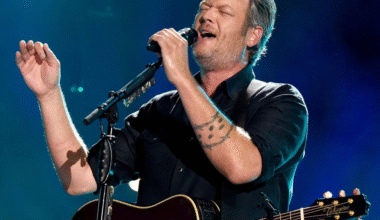Where is Bob Dylan today? It’s a question many are asking, especially nearly sixty years after the events depicted in A Complete Unknown . Far from the constant spotlight that accompanied his revolutionary youth, Dylan now leads a much more discreet existence. Yet even at over 80, he remains a key figure in global culture, with surprise tours, introspective albums, and an undiminished aura of mystery.
:max_bytes(150000):strip_icc():focal(749x0:751x2):format(webp)/bob-dylan-timothee-chalamet-a-complete-unknown-122624-22ecebbde8ac43039b682e7154a62f06.jpg)
Bob Dylan, born in 1941, continues to defy expectations. Many thought he would retire long ago, but he continues to surprise. In 2020, he released Rough and Rowdy Ways , an album critically acclaimed as one of his best in decades. It reveals Dylan as a poet, philosopher, and observer of the modern world with an eye both bitter and lucid. The 17-minute song “Murder Most Foul” revisits the JFK assassination while weaving a strange and hypnotic fresco of contemporary America.
Since then, he has continued to record and tour. Although his appearances are less frequent than before, he continues to fuel the legend. On tour, he still modifies his songs, transforming his classics until they are unrecognizable. This is not out of whim, but out of necessity: for Dylan, a frozen song is a dead song. It must be kept alive, even if it upsets the purists.
:max_bytes(150000):strip_icc():focal(749x0:751x2):format(webp)/bob-dylan-122624-1-4d1593f70e4d4c93bf68971974f47459.jpg)
His private life, meanwhile, remains a mystery. Dylan avoids the media, refuses traditional interviews, and steers clear of social media. He lives between California and the Midwest, surrounded by few close friends. He paints, he writes, he records. Some say he’s a recluse, others say he’s simply true to his innermost nature: that of an artist who never gives himself completely.
The contrast with the young Dylan of the 1960s is striking. Back then, he was at the center of everything: the counterculture, political struggles, artistic debates. He represented an entire generation, often against its will. Today, he seems to have finally found a form of peace in partial anonymity. And yet, every word he publishes, every public appearance, is still analyzed, dissected, and venerated.
Artistically, Dylan has never stopped experimenting. He’s written books, painted canvases exhibited in international galleries, launched his own whiskey distillery ( Heaven’s Door ), and even sold the rights to his music catalog for hundreds of millions of dollars. Some see it as a farewell, others simply a strategic maneuver.
But Dylan’s heart remains the song. And it is there that his genius continues to manifest itself. His recent lyrics, far from being rehashes, address aging, time, memory, and American history with a rare intensity. He doesn’t seek to please, but to tell the truth, his own, in a language that is sometimes cryptic, always laden with meaning.
Looking back on his career, we realize that Dylan never played by the rules. He eschewed the roles others wanted to impose on him: that of the folk hero, the rebel rocker, the prophet. He always preferred ambiguity to certainty, poetry to propaganda. This fidelity to himself is what still makes him so fascinating today.
So where is Bob Dylan now? He’s there, somewhere between the shadows and the light, perhaps writing a new song, preparing a new concert, or simply observing the world with his unique perspective. He never really left the stage—he simply redefined it on his own terms.
Ultimately, Dylan remains a mystery, but a living mystery. And as long as he continues to create, inspire, disturb, and upset, he will remain there, timeless.





